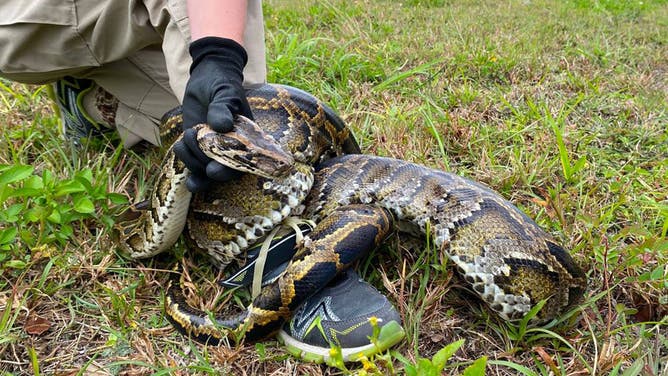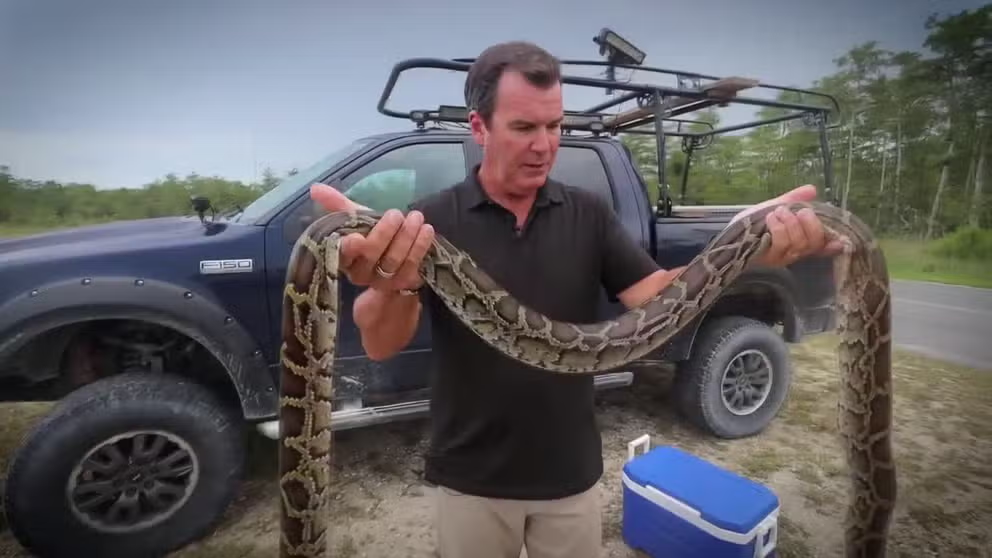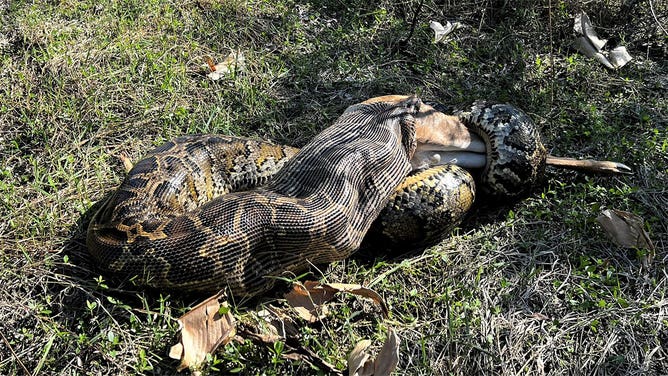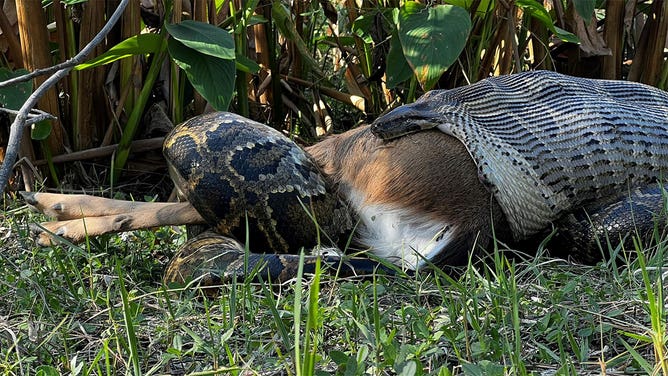Python found eating deer in Florida stuns scientists
“Watching an invasive apex predator swallow a full-sized deer in front of you is something that you will never forget. The impact the Burmese python is having on native wildlife cannot be denied. This is a wildlife issue of our time for the Greater Everglades ecosystem," Ian Bartoszek stated.
On the hunt for pythons in Florida
The invasive Burmese python is a serious threat to the Florida Everglades, preying on native species. Efforts are underway to remove as many as possible, as they also migrate north in search of new prey. FOX13's Mark Wilson joined expert python hunters for the Florida Python Challenge.
NAPLES, Fla. – A study by biologists in Southwest Florida has uncovered that massive snakes known as Burmese pythons can consume larger prey than initially thought.
According to the Conservancy of Southwest Florida, the snakes’ gape, or the measure of how wide the jaw can extend, is at least two inches wider than previously observed, allowing for the possibility of larger deer, alligators and other sizable prey being consumed by the reptiles.
The group says they measured the jaws of three large adult females, including one that was ingesting a 77-pound white-tailed deer in a Florida swamp. The deer was reported to be nearly two-thirds larger than the snake’s overall mass.
"Watching an invasive apex predator swallow a full-sized deer in front of you is something that you will never forget. The impact the Burmese python is having on native wildlife cannot be denied. This is a wildlife issue of our time for the Greater Everglades ecosystem," Ian Bartoszek, a biologist involved in the study, stated.
According to wildlife experts, the snakes’ lower jawbones are not fused, allowing their mouths to stretch.

Burmese pythons are believed to have arrived in South Florida as pets in the 1980s and then were released by frustrated owners who got tired of feeding them mice and other live meals.
(Miami Herald/Tribune News Service via Getty Images / Getty Images)
UNIVERSITY RELEASES ‘SPY’ PYTHONS IN EVERGLADES TO BETTER UNDERSTAND INVASIVE SPECIES
"Besides the large absolute size of the deer that was eaten being impressive, our anatomical measurements indicate this deer was very near the size limit of the prey that could be consumed by this snake. Hence, these snakes resemble overachievers by sometimes testing the limits of what their anatomy allows rather than being slackers that eat only ‘snack size’ prey," the Conservancy stated.
This adaptation allows the predator to consume prey six times larger than similar-sized snakes.
Previous studies have shown that animals such as bobcats, deer, raccoons, rabbits and foxes have all seen declines in the Everglades, as the pythons are able to survive due to their lack of predators.
The Conservancy hopes that the new information will help aid in control efforts by local decision-makers and biologists.

Researchers found that Burmese pythons can eat larger prey than previously thought.
(Conservancy of Southwest Florida / FOX Weather)
SEE THE MASSIVE ALLIGATOR FOUND LURKING IN A SOUTH FLORIDA SWAMP
According to the Conservancy’s Burmese python research and removal team, it has eradicated at least 770 adult pythons from the ecosystems of the Everglades and South Florida.
"We have been removing pythons and advancing invasive snake science for over a decade. These animals continue to impress us each season, and one thing we’ve learned for certain is to not underestimate the Burmese python," Bartoszek stated.
The National Park Service reports that the first Burmese python in the Everglades was spotted in 1979, and the population ballooned during the 1990s.
A 2013 estimate put the Burmese python population between 30,000 and 150,000 snakes in South Florida, with the number suspected to have grown in the years since.



